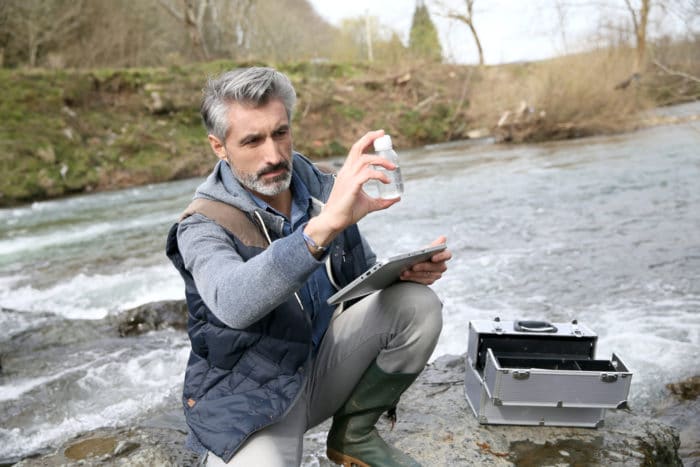Why We Love It
-
$105,720Potential Avg. Salary
-
10.4%Job Growth Rate
-
Growing DemandJob Outlook
-
Dependable Daily WorkloadCareer Attribute
Limnologists are scientists that observe, study and report on the fresh water rapids and the ecosystems surrounding that water. They conduct chemical analysis and retrieve plant and animal samples to understand ecological impact.
Recommended Schools
What is a Limnologist?
The following responsibilities are common for Limnologists:
- Collects fresh water samples on fish, water oxygen and temperature for example
- Conducts lab work and chemical analysis for alkalinity, pH levels, etc.
- Prepares fresh water management plans
- Collaborates with government agencies to manage the environmental impacts of human consumption and waste
- Identifies, monitors and tests biological life like fish, phytoplankton and other marine biological materials
A Day In the Life
Limnologists study the physical, chemical and biological properties of lakes, rivers, ponds and all other fresh bodies of water. They are leaders in protecting our freshwater resources.
They take part and lead many environmental assessments that determine the any negative impacts on bodies of fresh water. These assessments are a critical component for their environmental reviews. They start by gathering base-line data to understand the current status of the materials they are researching. They then use a thermometer to measure the temperature at different depths of the water. And lastly, they will link biological and physical characteristics to the water chemistry, and test these in a laboratory to determine any effects of the collected samples. All the data and research collected will be used to determine the health of the body of water.
Typical Work Schedule
Limnologists work in a variety of locations including offices, laboratories and also travel to different locations they are researching. The typical work week requires a full-time 40 hours.
Projected Job Growth
With the enormously expanding human population, the need for individuals like limnologists are needed to keep our environment clean and safe from hazardous waste and material.
Typical Employers
They can find employment at government agencies, environmental agencies, colleges and universities, engineering consulting firms and non-profit environmental organizations.
Recommended Schools
How To Become a Limnologist
To become a limnologist you can begin with a bachelor’s degree in a biology program. They can expect to take classes focusing on conservation biology, ecology, chemistry, physics, statistics and mathematics. In the Master’s of Science in Limnology degree program they will study biometrics, and biology research methods. They will explore their specific areas of interest through research and a thesis project.
Limnologist Salary Data
We’ve provided you the following to learn more about this career. The salary and growth data on this page comes from recently published Bureau of Labor Statistics data while the recommendations and editorial content are based on our research.
National Anual Salary
Low Range
$62,030Average
$105,720High Range
---National Hourly Wage
Low Range
$30/hrAverage
$51/hrHigh Range
---How do Limnologist salaries stack up to other jobs across the country? Based on the latest jobs data nationwide, Limnologist's can make an average annual salary of $105,720, or $51 per hour. On the lower end, they can make $62,030 or $30 per hour, perhaps when just starting out or based on the state you live in.
Salary Rankings And Facts
#55 Nationally for All Careers
Above Average Salary Nationally
Highest Education Among Limnologists
- 9.4% Doctorate
- 36.8% Masters
- 47.1% Bachelors
- 2.3% Associates
- 4.1% College
- 0% High School
- 0.3% Less than High School
Job Growth Projections and Forecast
2014 Total Jobs
36,4002024 Est. Jobs
40,200Job Growth Rate
10.4%Est. New Jobs
3,800How does Limnologist job growth stack up to other jobs across the country? By 2024, there will be a change of 3,800 jobs for a total of 40,200 people employed in the career nationwide. This is a 10.4% change in growth over the next ten years, giving the career a growth rate nationwide of Above Average.
Growth Rankings And Facts
#176 Nationally for All Careers
Above Avg. Growth Nationally
What Companies Employ The Most Limnologists
| Industry | Current Jobs | New Jobs Needed | % Increase |
|---|---|---|---|
| Oil and gas extraction | 8,000 | 1,000 | 1% |
| Engineering services | 6,200 | 800 | 1% |
| Management, scientific, and technical consulting services | 5,300 | 1,500 | 2% |












